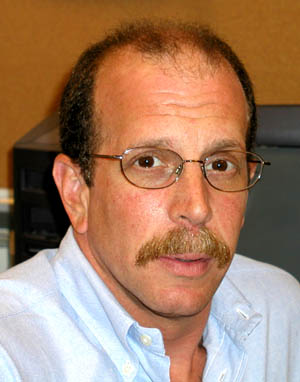Project URL:
Http://www.nrhs.org/Departments/Math/Newman/Newman
How it works:
This project takes students through
the different types of probability they will encounter in math, and
utilizes PowerPoint presentations. Students learn to use experimental
and theoretical probability to represent and solve problems involving
uncertainty. Each type of problem gives them the definitions of terms,
the formula to use, and a step-by-step tutorial with solution. Each type comes with at least one example to follow. The
interesting part of the tutorial is the text. Each
successive slide of new material is in a different color than the
previous one. In this way,
the student can see how the steps follow each other. The program has
been set up so that the user can manipulate the slides forward and
backward if a step is not understood. After
following the tutorial for each problem type, students will be able to
follow a teacher’s assignment with an interactive resource. The
students complete assignments designed around each different problem
type. After each type, there is a quiz to measure their progress and a
short conference with the teacher to discuss their scores. At the end
of the unit, students take a traditional test in order to measure
their knowledge. There is also a written component that allows the
students to critique the computer application.
Standards addressed:
Students judge the reasonableness of results obtained from
applications in algebra,
geometry, trigonometry, probability, and statistics; use experimental
and theoretical probability to represent and solve problems involving
uncertainty; use the concept of random variable in computing
probabilities; and determine probabilities, using permutations and
combinations.
Materials
used:
All that is needed is a computer
with Internet access and PowerPoint software.
The students:
The Probability Project was
designed for students in grades 9 through 11. All math students are
encouraged to use this program when studying probability.
Overall value:
After a brief introduction to the topic, students can work through this
unit individually or in groups through student-centered learning. This gives the teacher the opportunity to work with students in
a unique environment. By using
the Internet, students get instant help and feedback that they would
not get from other manipulatives. The
tutorial allows the student to work step-by-step through a series of
problems at their own pace.
Tips:
Students can refer to their
textbooks, teacher handouts, and past Regents exams for related
problems. |

About the teacher:
Steve Newman has been teaching high
school math for ten years. He
currently teaches at New Rochelle High. During his career, he
has worked with students in many different levels and courses. He enjoys bringing in real-world situations whenever possible
and likes to create projects designed around these topics.
E-mail:
sn100@aol.com
Subject Areas:
Mathematics
Technology
Grade Levels:
9-11
|